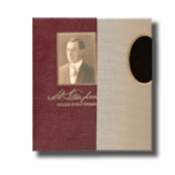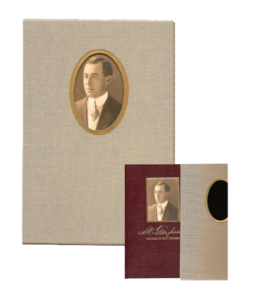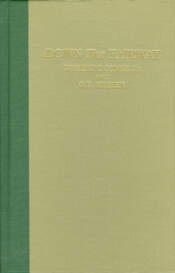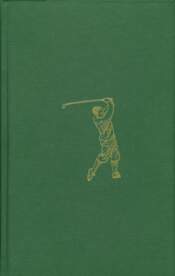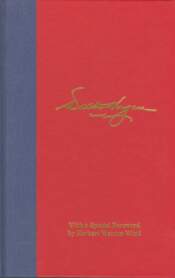$40.00Add to cart
By Robert T. Jones, Jr., and O.B. Keller
How would you feel if, as a first-time participant, you were leading the United States Amateur Championship field after the initial qualifying round? Kids dream themselves into those roles, but one kid found himself living that dream: Robert Tyre Jones, Jr., age-14*. With a storybook beginning like that, you know this golf book is going to be a bestseller. Here is Jones’ life story, full of more drama than a paperback thriller, written at the ripe old age of 24. If it were fiction, the editor would have rejected it for being too fantastic. Quoting Grantland Rice, “The start of Bobby Jones’ career to date is one of the most interesting episodes in all sport, one of the most unusual of all careers…back of this amazing skill there have also been character, magnetism, courage, and intelligence of a high order.”
* Jones informally signed his name “Bob” and his friends used “Bob.” The press and the general populace most often used “Bobby,” and although Jones did not particularly like that nickname, he surely got used to it.
Jones wrote Down the Fairway after his pair of victories in the 1926 British and U.S. Open Championships. It was an accomplishment previously unachieved and he felt he was at the peak of his game and his career. Now the world knows even more records would fall, but having bested the finest professional players included twice on the world stages it was hard to foresee higher pinnacles. He was playing as an amateur but he knew he was masquerading. As a student at Emory University Law School with Bachelor of Science degrees from Georgia Tech and Harvard, he was looking forward to the legal profession and eventually a family. He felt graciously indulged by his father, who had been denied a professional baseball career with Brooklyn in the National League by his father, Bobby’s grandfather and namesake, Robert Tyre Jones. Banner headlines aside, Bobby Jones knew he was a part-time amateur, and felt he probably had taken his golf game as far as it could, and possibly should, go. Tally to 1926: 120 trophies and 30 medals.
Jones writes of an idyllic boyhood with golf being just one of the games of play. “I liked baseball much better,” he wrote, but played a home-made two-hole golf course “because of a dearth of boys in the neighborhood with whom to play baseball.” Eventually he joined his parents at the East Lake club, playing a few shots per hole with his first club, a cut-down second-hand cleek. He took to following the new pro Stewart Maiden around the course, although “He said very little and I couldn’t understand a single word of what he said.” According to his father, Bobby “was a natural mimic in those days,” and he must have been. At age-nine, he won the Junior Championship of the Atlantic Athletic Club.
There are moments of epiphany in life and Jones records one: when he discovered the scorecard. He had always played to defeat his young opponent, especially if it was his good friend Perry Adair. During one such contest, Jones was winning and playing so well he forgot about Adair, and concentrated only on his score. When it resulted in a personal best of 80, Bobby not only felt elated, but also realized that “the toughest opponent of them all—Old Man Par” would always be ready for a game. A loss to that imaginary opponent might be inevitable, but that was fine, because as he writes, “I never learned anything from a match I won.” Jones was Georgia State Amateur Champion as “a chunky boy of 14.”
Around that time Jones had his second golf epiphany: “There are two kinds of golf: golf—and tournament golf. And they are not at all the same thing.” It is more than the physical exertion. “I can play 36 holes of golf every day for two weeks and weigh the same at the end” says Jones. Nevertheless, in competition, “I always lose from ten to fifteen pounds in a championship of three or six days’ duration.” That Jones wanted to win with every fiber of his being was never in doubt, and that was part of his attraction. He was the real deal, a genuine phenomenon: everyone wanted to meet him or watch him play. Jones’ recollections of his matches are exciting, highlighting some great players and personages of the day. However, true to a Hollywood script, there were seven lean years until Jones’ fantastic 1926 season. Even Jones found it odd that he began his best year “with one glorious licking and closed it with another.” (Walter Hagen delivered one thrashing and George Von Elm the other.)
Part Two of the book is instructional, an often forgotten but important section of his autobiography. Like Part One, it is simple to see why Jones’ swing was strong and lasting. Bobby’s tuition is facilitated by anecdotes and incidents concerning particular shots he is teaching. Easy to read and understand, the methods he describes are his own. While Jones does not suggest copying his physical swing, he does feel the mental side is very similar for everyone and the most difficult to conquer. Duff shots are not the sole property of the beginner. When at Merion preparing for his first national amateur, baffled by the fast greens, Jones actually putted off one green into a brook! Read why Jones liked to put the ball on the green as soon as possible when chipping; or why he felt the free body turn was the most important factor in his swing. These and many more explanations await the student.
A Chronology of Jones’ golf events is a fitting conclusion to the text. How many guessed his career had hardly begun when this book was issued? For the final chapters of Bobby Jones’ life one must turn to his 1960 book, Golf is My Game (a Classics of Golf title), where, among many other events, the story of the 1930 Grand Slam is retold. For now, enjoy Down the Fairway: The Golf Life and Play of Robert T. Jones, Jr. which is, according to the esteemed Herbert Warren Wind, simply “the best book about golf ever written.”
Foreword by Herbert Warren Wind, Afterword by Francis M. Bird.



